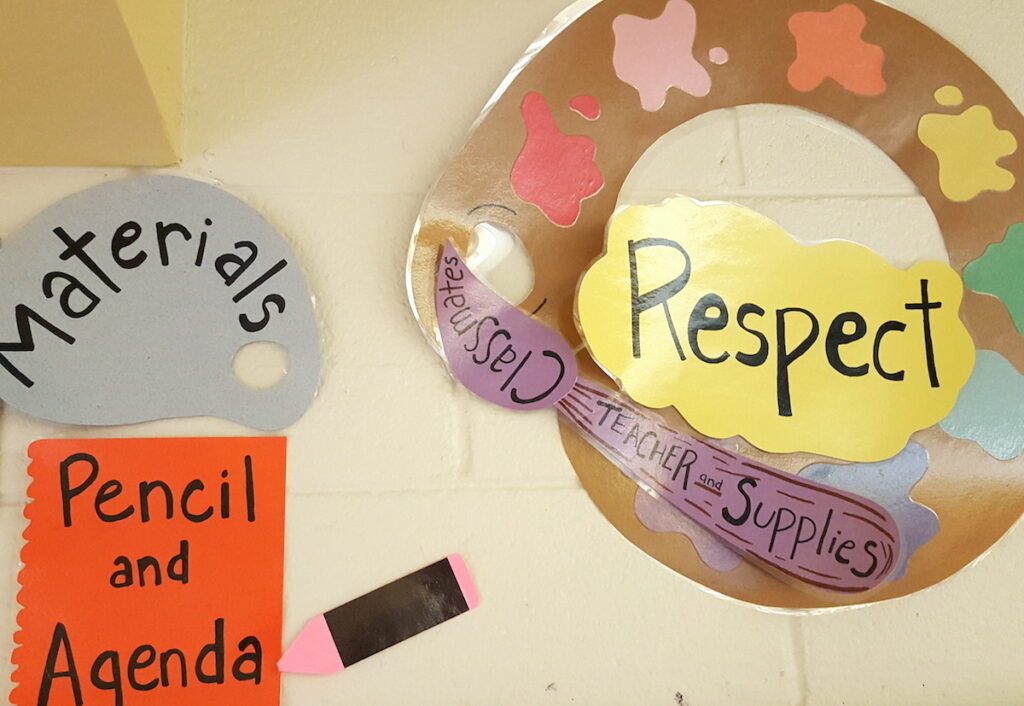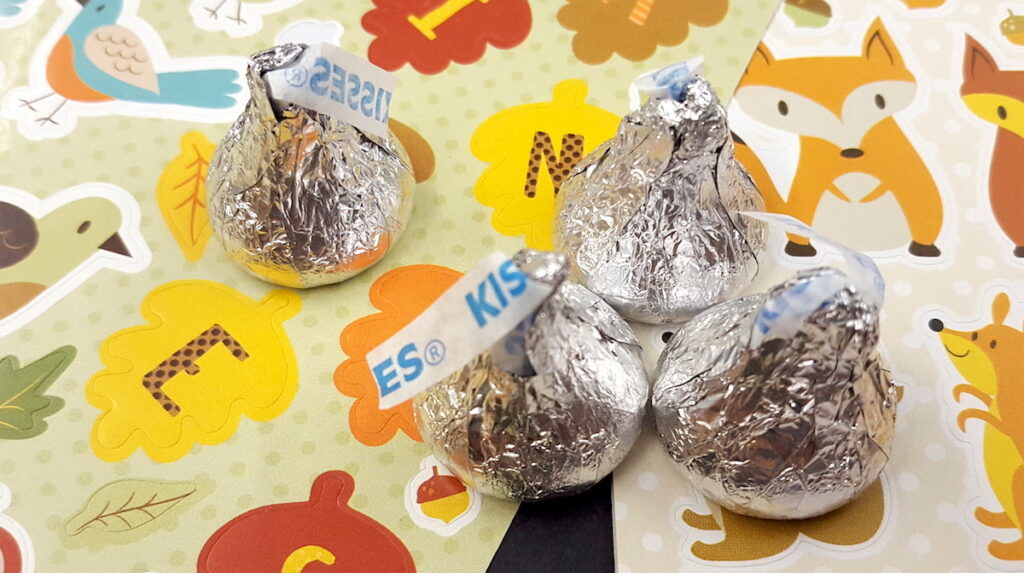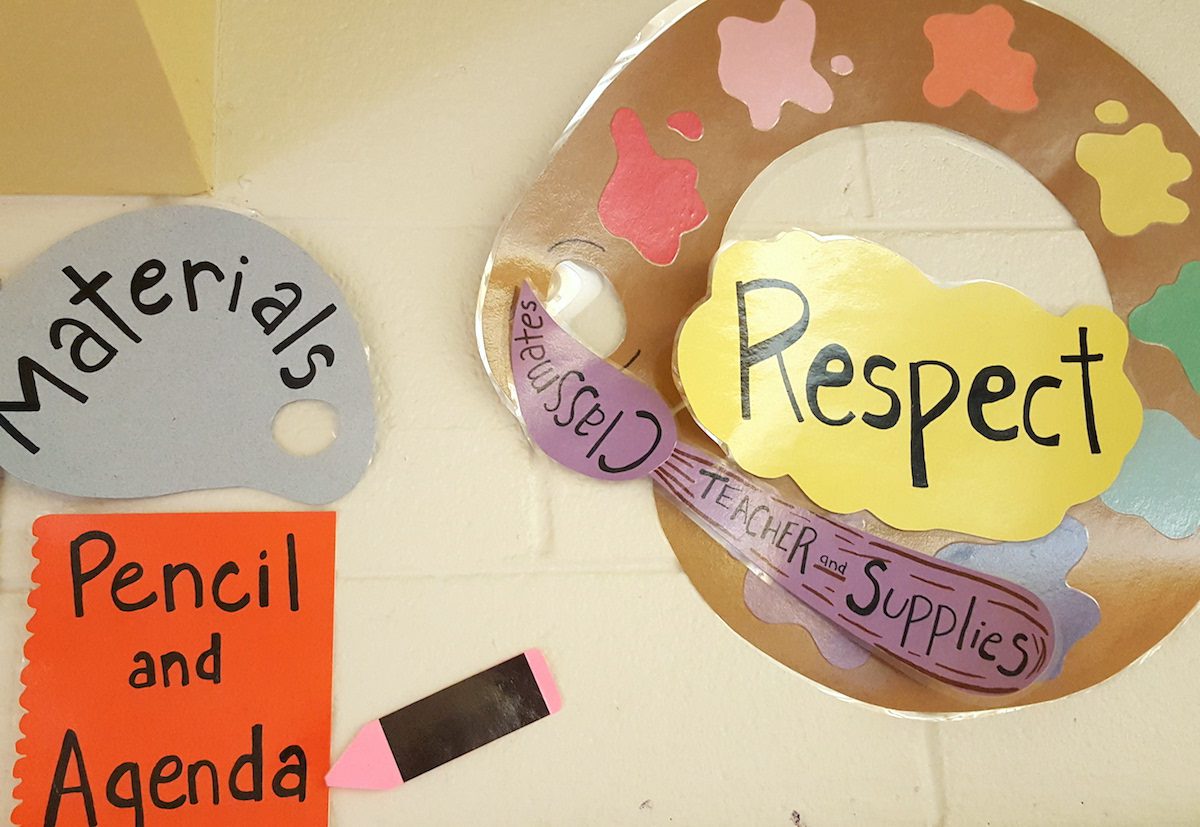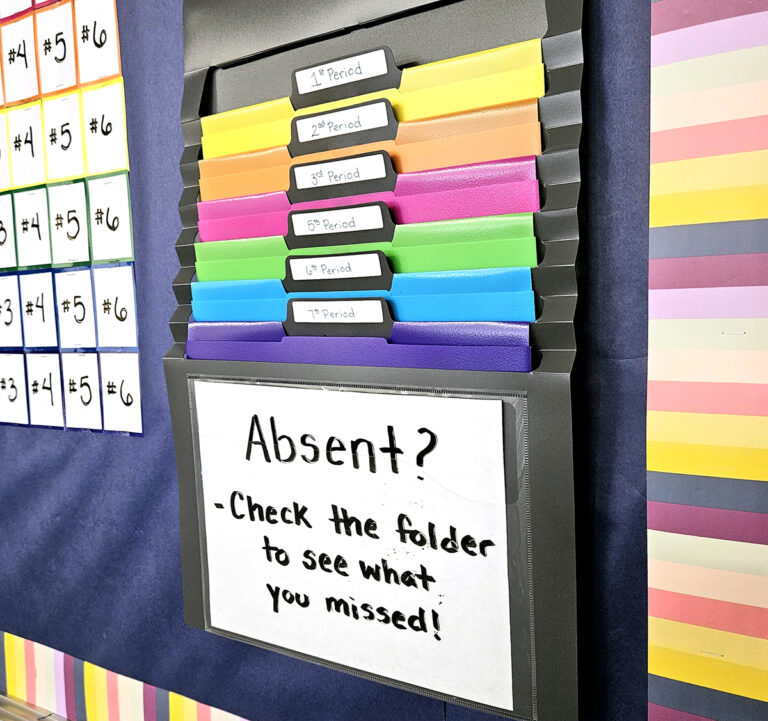Managing an art room is not always easy. With messy materials, large class sizes, and time restraints, it can seem almost impossible to keep everything on track! As we all know, once a class loses focus, it takes a lot to get them back.
Here are some simple and effective strategies to manage even the most unruly class.

1. Keep them busy!
This is so important. We’ve all found ourselves in the middle of a class and realized what we had planned for the day took much less time than expected. Your panic grows with the realization there is nothing else planned or prepared for students to do after they complete their work. These are the times students start to act up. Even those who are not yet done with their work start to lose focus. The entire class may get off task.
To avoid this, make sure you have prepared several steps ahead. If you think your students will only be drawing and will paint the next class, prepare some paint just in case. Or have an extra activity planned to extend the knowledge of your early finishers. For example, if your students are doing a still life, provide an activity about how to add dimension using value. Whatever you do, make sure that you have more prepared than even your fastest student can complete in a class period.
2. Teach your expectations (and then teach them again!)
You go over your classroom expectations on the first day. After that, do you reteach them? If not, you should.
Even if your rules are simple, it is important to remind students of your expectations regularly. Try to do this before issues arise. I sometimes make my bell ringers about my classroom expectations, to see if we need to go over them again.
If you often revisit your rules and expectations, students will understand they are important. They will be more likely to follow them, too. And, if issues do come up, students will not be able to say they didn’t know.
3. Use sound to structure class time.
Using sound to help manage a classroom is very effective. Most teachers use clapping or a call back to get the class’ attention. There are many other ways that sounds can be used to manage a class, though.
One powerful way to use sound is to play different kinds of music for each activity. For example, play classical music as students enter and complete their bell ringers. When it is time to transition to the next part of the class, play a different kind of music, such as jazz. This will be a clear signal to students to transition. Once they get used to it, you will not even have to say anything as students prepare for your instruction.
Another great use of sound is to use a timer to pace the class. Timers are wonderful tools to structure class time. The sound of a timer going off is a clear signal to students to stop and move on to the next task.

4. Reward those who are doing the right thing.
Sometimes students need some positive reinforcement to remember the expectations. I often use a strategy of rewarding the students who are doing the right thing for the entire class. These are students who are meeting all my behavioral expectations the entire time. In a class that often has behavioral issues, these students can sometimes feel overlooked. It is important to show them you notice their effort to behave. This also serves to communicate your expectations to those who are not behaving.
In the beginning of the class, communicate your intention to reward those students who are doing the right thing. Make sure that you have enough for the entire class of whatever it is you are using as a reward. As the class progresses, remind students that you are paying attention to those who are on task and following the class rules. At the end of the class, go around and reward those who have met your expectations. You should not call out those who are not getting the reward. Just silently skip them. Most of the time, they know why they are not getting the reward. If they ask, privately give them feedback about what they can do better next time.
This strategy has proven to be effective with all of my elementary and middle school students. The key is to choose a reward students want. This can be anything from stickers to candy. Keep it small yet desirable.
5. Build positive relationships.
We all know that relationships are the cornerstones of good teaching. Building them takes time. Yet, once you have established strong relationships with your students you will have a much easier time managing your class.
I once had a particularly difficult relationship with a student. She was constantly disruptive. She would throw materials, talk back, and refuse to complete any work. I was not sure what to do. Conferencing with her, calls home, and detentions were not helping.
I decided to take another approach. I found out that she was on the school dance team, and came to one of their performances. I cheered her on from the audience. The next day as she entered class, I stopped her to tell her how impressed I had been watching her dance. After this, she never misbehaved in my class again.
Making time to find out about students and support them beyond the classroom is a powerful tool. By investing in your relationships with students, you build a culture of caring that creates a safe place for students to learn and grow. When students feel safe and cared for, they work hard and accept challenges.
Classroom management is multi-faceted and complex. Each class and student is different, and what works for one group may not work for another. If you work to keep students engaged and incorporate these strategies, you will be able to manage even the most challenging class.
What strategies do you use to manage your classes?
How do you build relationships with students?
Magazine articles and podcasts are opinions of professional education contributors and do not necessarily represent the position of the Art of Education University (AOEU) or its academic offerings. Contributors use terms in the way they are most often talked about in the scope of their educational experiences.





